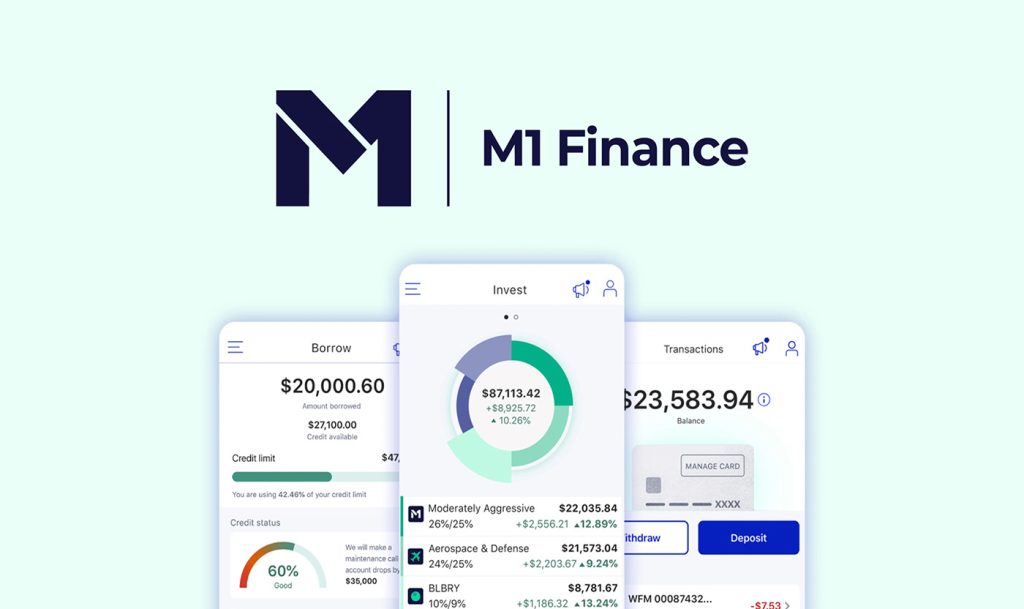In 2024, technology is changing the way we approach investing, making it easier and more efficient to manage and track our portfolios. Whether you’re a seasoned investor or just starting out, one of the most important steps to financial success is staying on top of your investments. This includes monitoring performance, analyzing asset allocation, and making informed decisions based on real-time data.
Fortunately, with the rise of advanced investment software, managing and tracking your portfolio has never been easier. In this article, I’ll walk you through how to use investment tracking software to streamline portfolio management, along with detailed tips to help you maximize your returns and minimize unnecessary risks.
1. The Importance of Tracking Your Investment Portfolio
Before diving into the technical aspects of investment software, it’s important to understand why tracking your portfolio is so crucial. A portfolio is made up of various assets—stocks, bonds, mutual funds, ETFs, and even real estate. These assets will fluctuate in value over time, and if you’re not keeping track of them, it can be difficult to know if you’re on the right track to meet your financial goals.
Here are a few key reasons why tracking your portfolio is vital:
a. Performance Evaluation
Regularly checking your portfolio allows you to evaluate its performance against your financial goals. Are you reaching your target returns? Is your portfolio overexposed to certain sectors? By tracking these metrics, you can make data-driven adjustments.
b. Rebalancing Opportunities
Over time, certain investments may outperform others, which means your asset allocation could become unbalanced. Tracking helps you identify when it’s time to rebalance—either by buying underperforming assets or selling off assets that have grown too large a proportion of your portfolio.
c. Risk Management
The more you track your portfolio, the more you can spot potential risks. A sudden drop in a single stock’s price or an unexpected economic event might put your entire portfolio at risk. By staying updated on your investments, you can act quickly to mitigate potential losses.

2. Key Features of Investment Tracking Software
Now that we understand the importance of tracking your portfolio, let’s explore the essential features you should look for in an investment tracking tool. Not all investment software is created equal, so knowing what to look for will help you choose the right one for your needs.
a. Real-Time Data Syncing
One of the most critical features of investment tracking software is the ability to sync in real-time with market data. Real-time updates allow you to make informed decisions based on the latest trends and price changes. Whether it’s the price of a stock, a bond’s yield, or an ETF’s net asset value (NAV), having accurate, up-to-date information is essential for proper portfolio management.
b. Comprehensive Asset Tracking
Your portfolio may consist of a variety of assets, including stocks, bonds, mutual funds, and real estate. Some tracking tools focus only on stocks, but the best ones will allow you to manage all types of investments in one place. This is especially useful for diversifying your portfolio and keeping track of assets in different asset classes.
c. Portfolio Analysis and Visualization Tools
Most good investment tracking software offers built-in analysis tools that provide insights into your portfolio’s performance. Features like asset allocation breakdowns, return on investment (ROI) graphs, and historical performance analysis give you a clearer picture of how well your investments are performing. These tools can help you spot trends, make adjustments, and assess whether your portfolio is aligned with your long-term goals.
d. Tax Reporting and Capital Gains Calculation
Understanding the tax implications of your investments is essential for long-term wealth building. Many tracking tools now include tax reporting capabilities that calculate capital gains, dividends, and income earned from your investments. This is a great feature for preparing for tax season and ensuring that you’re managing your investments in the most tax-efficient way possible.
e. Customizable Alerts and Notifications
In 2024, investors don’t have to stay glued to their screens all day to monitor their investments. Many investment tracking apps offer customizable alerts that notify you when specific events occur—whether it’s a price drop, an asset reaching a certain target, or an important news event that could affect your portfolio. Setting up these alerts ensures that you’re always in the loop without constantly checking the markets.
f. Security Features
Since you’ll be inputting sensitive information like your financial accounts and investment data, security is a top priority. Choose investment software that offers strong encryption, two-factor authentication, and other robust security features to protect your data.
3. Top Investment Software and Platforms for Portfolio Tracking
Now that we know the essential features of tracking software, let’s dive into some of the best platforms currently available. I’ll walk you through a few options that can help you streamline your portfolio management and provide valuable insights into your investments.
a. Morningstar
Morningstar is one of the most well-known names in the world of investment research and tracking. While it offers a vast array of resources for professional investors, it’s also an excellent tool for individuals looking to track and manage their portfolios. Morningstar’s platform allows you to monitor stocks, mutual funds, ETFs, and bonds all in one place. It also provides detailed analysis, risk metrics, and performance tracking to help you evaluate how well your investments are doing.
Key features:
- Real-time performance tracking for stocks, bonds, and mutual funds
- Detailed analysis of individual assets and entire portfolios
- Portfolio allocation reports and performance analysis tools
- Tax reporting and capital gains calculations
- Comprehensive research and expert opinions
Morningstar’s website is an excellent resource for investors who want a combination of deep research and portfolio tracking tools.
b. Personal Capital
Personal Capital is another standout platform for investors looking to track their portfolios. This tool not only helps you monitor your investments but also offers a comprehensive financial dashboard that gives you insights into your overall financial health. You can track your spending, net worth, and retirement savings all in one place.
Key features:
- Automated portfolio tracking with real-time updates
- Asset allocation tools and performance analytics
- Retirement planning features to project future savings growth
- Detailed expense and cash flow management
- Security features like two-factor authentication
Personal Capital’s free tool is excellent for investors who want a holistic view of their financial situation, combining investment tracking with budgeting and retirement planning.
c. Yahoo Finance
Yahoo Finance is a popular tool for keeping up with the latest market news and stock prices, but it also offers robust portfolio tracking features. The platform allows you to track individual stocks, bonds, mutual funds, and ETFs in real time. You can set up a watchlist and receive alerts for specific stocks or price movements.
Key features:
- Real-time stock price and market news updates
- Customizable watchlists and alerts
- Portfolio tracking with visual performance charts
- Interactive charts and historical performance data
Yahoo Finance is a great option if you want a straightforward, easy-to-use platform for tracking individual assets and watching the latest market trends.
d. Wealthfront
Wealthfront is another powerful investment software platform, especially for those who prefer hands-off investing. While it is known for its automated portfolio management service (Robo-advisor), Wealthfront also offers tracking features that help you monitor your progress over time. It’s especially popular among long-term investors and those saving for retirement.
Key features:
- Automated investment management with low fees
- Real-time portfolio tracking and asset allocation updates
- Tax-efficient investing features, including tax-loss harvesting
- Goal-based investment planning (e.g., retirement, home purchase)
Wealthfront’s simple interface and automated features make it ideal for passive investors who want to track their investments without having to actively manage them.
e. M1 Finance
M1 Finance provides a unique combination of automated investing and portfolio tracking. The platform allows you to create a customized portfolio (or “pie”) by choosing specific stocks and ETFs. It then automates the process of buying and rebalancing those assets according to your preferences.
Key features:
- Customizable portfolio creation and management
- Automated rebalancing of your investments
- Real-time performance tracking and detailed portfolio breakdowns
- Fractional shares to enable smaller investment amounts
M1 Finance is perfect for investors who want to take a more hands-on approach to portfolio customization but still benefit from automation in terms of management and rebalancing.
f. Fidelity
Fidelity offers a full suite of services for both active and passive investors, and its investment tracking tools are no exception. With Fidelity’s platform, you can track individual stocks, mutual funds, ETFs, and more. It also offers excellent retirement planning features for long-term investors.
Key features:
- Real-time stock price tracking and analysis
- Asset allocation reports and portfolio performance tools
- Retirement planning features like calculators and projections
- Research and analysis from top financial experts
Fidelity’s platform is robust and well-suited for long-term investors, providing all the tools necessary to track your investments and ensure you’re on the right path toward your financial goals.
4. How to Get the Most Out of Your Investment Software
Once you’ve selected the right investment tracking software, here are some tips on how to maximize its value:
a. Set Clear Investment Goals
Before you start tracking, take some time to define your financial goals. Are you saving for retirement, building wealth, or aiming for short-term financial goals? Knowing your objectives will help you customize your portfolio and ensure that you’re tracking the right metrics.
b. Review Your Portfolio Regularly
It’s important to check your portfolio at least once a month, or more frequently if you’re an active investor. By reviewing your portfolio regularly, you can spot any potential issues, make adjustments, and stay on track with your long-term goals.

c. Use Alerts Wisely
Set up alerts for key events, such as price movements, asset allocation changes, or news related to specific investments. But don’t overdo it—too many alerts can overwhelm you and distract from your overall investment strategy.
d. Take Advantage of Educational Resources
Most investment software platforms offer educational materials to help you understand how to make the most of their features. Take advantage of webinars, blogs, and tutorials to enhance your investment knowledge and improve your tracking skills.
e. Use Security Features
Always enable two-factor authentication and other security measures to protect your personal and financial information. Your investment data is valuable, and keeping it secure should be a top priority.
In today’s world, tracking your investment portfolio doesn’t have to be complicated or time-consuming. With the right investment software, you can easily monitor your assets, evaluate your portfolio’s performance, and make informed decisions based on real-time data. Whether you’re a beginner or an experienced investor, these tools can help you stay on top of your financial goals and build wealth over time.
As always, do your research, stay disciplined, and remember that the key to successful investing is not just choosing the right assets, but also staying organized and informed.



